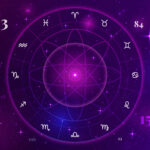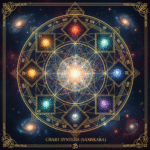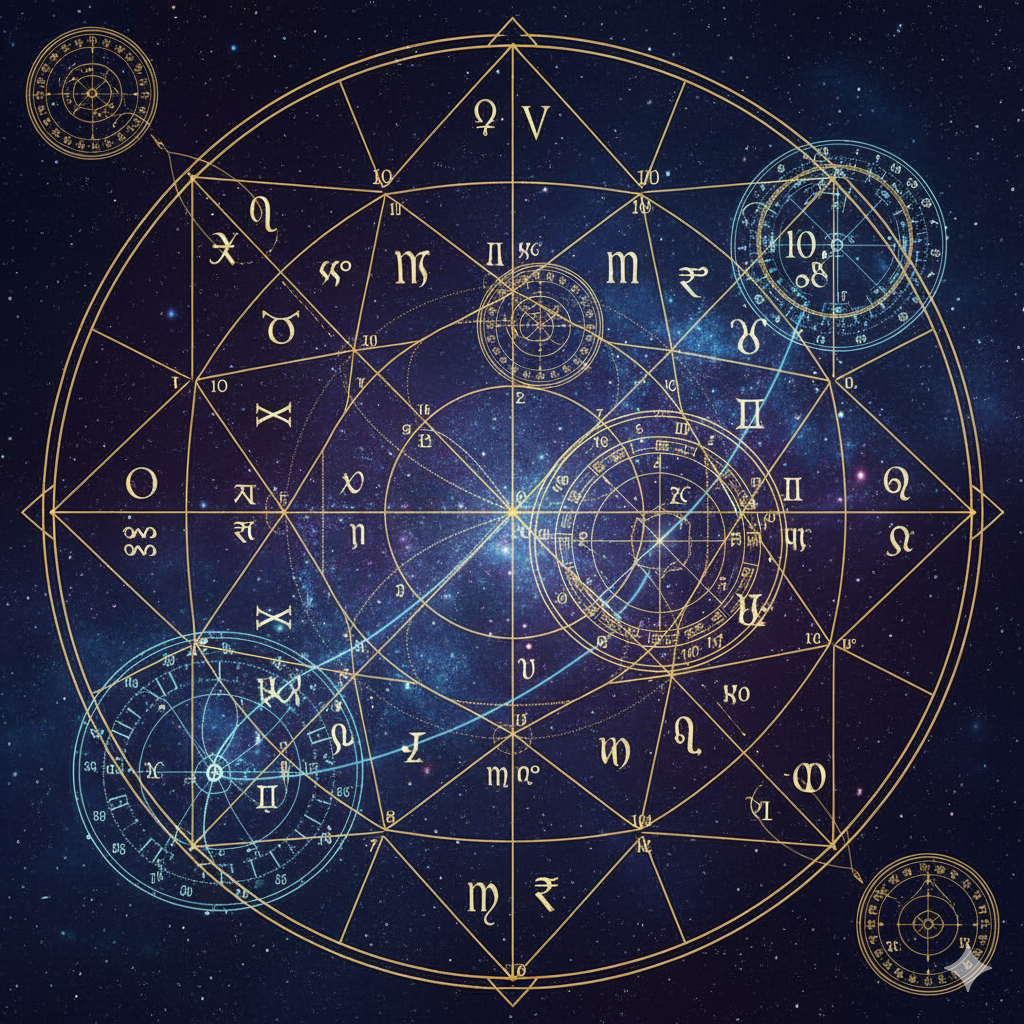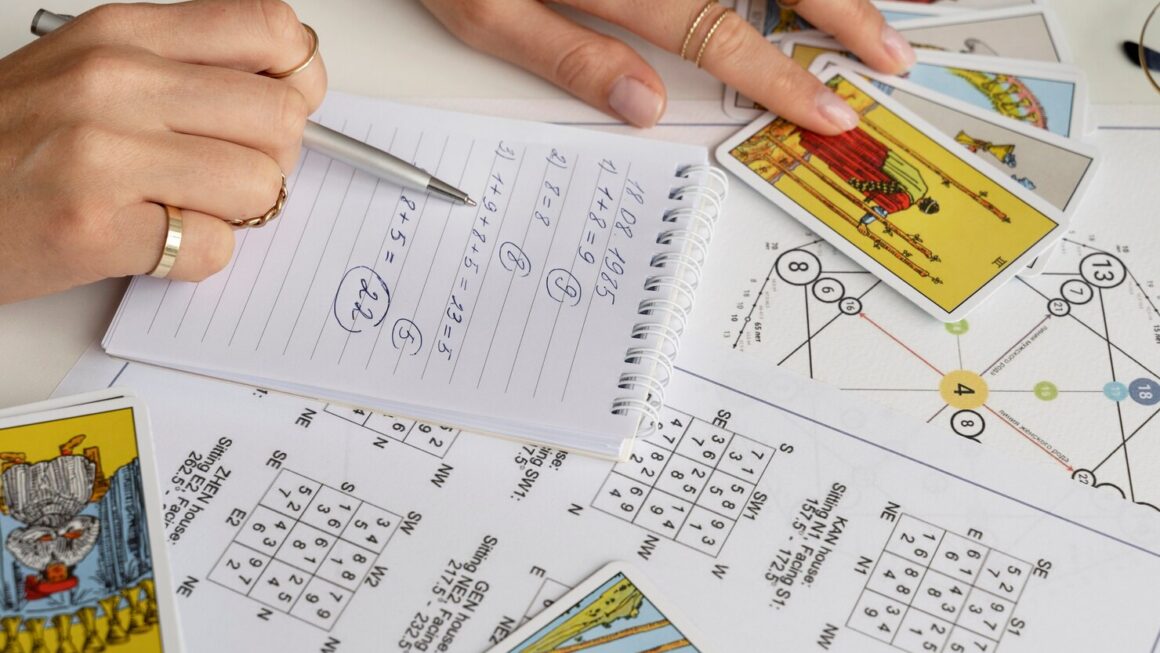What lies beneath the surface of your main Vedic astrology birth chart (Rasi chart)? While the Rasi chart provides the foundational map of your life, revealing planetary positions and core potentials, it doesn’t tell the whole story. To truly unlock the intricate details, hidden strengths, and specific nuances related to different areas of life – like marriage, career, or children – we must delve deeper. This requires exploring a unique and powerful tool in Jyotish: the Divisional Charts, or ‘Vargas’. Understanding what are divisional charts vedic is the key to moving beyond a general reading to a highly specific and insightful analysis. This guide serves as your introduction to the fascinating world of vargas vedic astrology, explaining their significance and how they reveal the subtle layers of destiny.

Vargas Vedic Astrology: Peeling Back the Layers of the Horoscope
Before we explore specific charts, let’s understand the core concept. The Rasi chart (D1) divides the 360-degree zodiac into 12 signs of 30 degrees each. Divisional charts vedic astrology uses, known as Vargas (meaning ‘division’ or ‘part’), are created by mathematically dividing each of these 30-degree signs into smaller segments.
Each segment is then assigned to a new sign based on specific rules, creating a new chart for that particular division. Think of it like zooming in on a map: the Rasi chart is the world map, showing the continents and countries, while the Vargas are detailed city or street maps, revealing the specifics of a particular area. These varga charts are sometimes called harmonic charts because of the mathematical harmony underlying their construction.
What Are Divisional Charts? Magnifying Specific Life Areas
(Opinion): Divisional charts (Vargas) are essential, supplementary charts in Vedic astrology used to gain a microscopic view of specific areas of life. They act as magnifiers, revealing the subtle strengths, weaknesses, qualities, and karmic underpinnings related to marriage (Navamsa D9), career (Dasamsa D10), children (Saptamsa D7), and many other domains, providing crucial details that the main Rasi chart (D1) alone cannot fully convey.
(Reason): Why are these divisions necessary? The Rasi chart shows the broad strokes – the planets’ general positions and interactions. However, a single house in the Rasi chart governs many different significations. For example, the 7th house relates to marriage but also business partnerships and public image. How can we differentiate the potential in these areas? The Vargas provide the answer.
Each Varga focuses the lens on a specific subset of life’s experiences. By mathematically “stretching” or dividing the zodiac in different ways, each Varga highlights the subtle planetary influences governing that specific domain. This allows for a much more nuanced and accurate assessment of potential outcomes in different life sectors.
(Example): Consider a planet like Venus placed in a seemingly weak position in the Rasi chart, perhaps in an enemy’s sign. This might initially suggest difficulties in relationships. However, if that same Venus occupies its exaltation sign or own sign in the Navamsa chart (D9), the Varga specifically related to marriage and underlying strengths, it reveals a hidden, intrinsic power.
This indicates that despite potential surface-level challenges (shown in Rasi), the core quality of Venus related to relationships is actually very strong, promising good results, especially concerning the spouse and marital harmony. Conversely, a planet looking strong in the Rasi chart but falling into debilitation in the relevant Varga chart shows a superficial strength that may not deliver the expected results in that specific area of life.
(Opinion/Restatement): Therefore, vargas vedic astrology provides the indispensable depth required for a sophisticated analysis. They reveal the true quality and operational strength of planets concerning specific life areas, moving beyond the general potential shown in the Rasi chart to the specific manifestation. Understanding what are divisional charts is key to unlocking predictive accuracy.
Varga Charts: How Are They Calculated? (The Basic Principle)
(Pattern Spotting): How are these detailed maps created from the main birth chart? While the exact calculations for each Varga are complex and best handled by reliable astrology software, the underlying principle involves dividing each 30-degree sign into a specific number of equal segments.
The Harmonic Principle:
- Division: Each sign is divided into ‘N’ equal parts (where ‘N’ is the number of the Varga, e.g., 9 parts for Navamsa D9, 10 parts for Dasamsa D10).
- Assignment: Each small segment is then assigned lordship based on specific rules (e.g., sequential signs, specific patterns based on sign quality – movable, fixed, dual).
- New Chart Construction: A planet’s position within a specific segment in the Rasi chart determines its sign placement in that particular Varga chart. The Ascendant (Lagna) is also calculated for each Varga, creating a completely new chart with its own house structure.
For example, in the Navamsa (D9), each 30-degree sign is divided into 9 segments of 3°20′ each. A planet falling within the first 3°20′ segment of Aries in the Rasi chart might fall into Aries Navamsa, the next 3°20′ segment into Taurus Navamsa, and so on, following specific assignment rules. This mathematical relationship is why they are sometimes called harmonic charts.
Key Divisional Charts and Their Significance:
While there are many Vargas (traditionally 16 are common, but some systems use more), a few are considered essential for most analyses:
- D1 (Rasi): The main birth chart. Shows the physical body, overall life path, and general planetary placements. The foundation.
- D9 (Navamsa): The most important Varga after the Rasi. Reveals underlying strengths/weaknesses, dharma (purpose), marriage, spouse, relationships, and the ‘fruit’ of the planets. Assessed for all matters.
- D10 (Dasamsa): The chart for career, profession, status, achievements, and actions in society. Crucial for understanding professional success.
- D3 (Drekkana): Related to siblings, courage, initiative, and hands/arms. Also used for specific timing techniques.
- D4 (Chaturthamsa): Relates to property, home, mother, vehicles, and general fortune or destiny (Bhagya).
- D7 (Saptamsa): The primary chart for analyzing children, progeny, grandchildren, and creative potential.
- D12 (Dwadashamsa): Relates to parents, lineage, past life influences, and hidden strengths/weaknesses.
Other Vargas like D2 (Hora – wealth), D16 (Shodashamsa – vehicles/comforts), D24 (Siddhamsa – education), D30 (Trimshamsha – specific misfortunes/character), and D60 (Shashtiamsha – highly detailed karmic analysis, requires extremely accurate birth time) are used by advanced astrologers for specific inquiries.
How to Use Divisional Charts in Analysis
(Value): How do these varga charts refine our understanding and predictions? Their primary uses are:
- Assessing True Planetary Strength: This is perhaps the most crucial function. A planet’s dignity (exaltation, own sign, debilitation, etc.) in the relevant Varga reveals its intrinsic quality regarding the matters of that Varga.
- Vargottama: A planet occupying the same sign in the Rasi chart AND the Navamsa chart is considered ‘Vargottama’ and becomes exceptionally strong, able to give the results of its own sign regardless of its Rasi placement.
- Confirmation/Contradiction: Strong Rasi placement confirmed by strength in Vargas gives excellent results. Strong Rasi placement contradicted by weakness in Vargas shows superficial strength or difficulties in that specific Varga’s domain. Weak Rasi placement redeemed by strength in Vargas shows hidden potential that can manifest, especially during the planet’s Dasha.
- Analyzing Specific Life Areas: For detailed questions, the relevant Varga becomes the primary chart.
- Marriage: Analyze the D9 Lagna, D9 Lagna Lord, the 7th house/lord in D9, and Venus/Jupiter in D9 for the quality of marriage and spouse.
- Career: Analyze the D10 Lagna, D10 Lagna Lord, the 10th house/lord in D10, and relevant Karakas (Sun, Saturn, Mercury) in D10 for professional success, type of work, and status.
- Children: Analyze the D7 Lagna, D7 Lagna Lord, the 5th house/lord in D7, and Jupiter in D7 for matters related to progeny.
- Refining Yoga Analysis: The strength and placement of planets forming Yogas in the Rasi chart should be confirmed in the Navamsa (and other relevant Vargas) to assess the yoga’s true power and quality. A Raja Yoga formed by planets weak in D9 may not grant significant status.
- Timing Events: Advanced techniques use Varga charts in conjunction with Dasha periods and transits for more precise timing of events related to that Varga’s significations.
Mythbusting: Common Errors in Using Varga Charts
(Engagement): The power of vargas vedic astrology also comes with potential pitfalls. Beginners often make mistakes that lead to inaccurate conclusions. Here are key things to avoid:
- Ignoring the Rasi Chart (D1): Vargas are supplementary charts. They provide detail and quality, but the Rasi chart shows the primary physical manifestation and overall life context. A planet strong in Vargas but extremely weak and afflicted in the Rasi chart might struggle to deliver tangible results in the real world. Analyze Vargas in conjunction with, not instead of, the Rasi.
- Using an Inaccurate Birth Time: This is the single biggest reason for errors in Varga analysis. The Ascendant (Lagna) in divisional charts changes much faster than in the Rasi chart (e.g., the Navamsa Lagna changes roughly every 13-14 minutes). Even a small error of 5-10 minutes in birth time can shift the Varga Lagna and the house placements of all planets, leading to completely wrong interpretations. Vargas should only be relied upon heavily if the birth time is known to be highly accurate (preferably rectified by an expert).
- Applying All Rasi Rules Blindly: While planetary dignity is key, the application of aspects and house lordships in Vargas is a subject of debate among different schools of thought. Focus primarily on the strength derived from sign placement (exaltation, own sign, Vargottama, debilitation) and the placement in houses within that Varga chart relative to its Varga Lagna.
- Getting Lost in Too Many Vargas: While many Vargas exist, focusing intensely on the most crucial ones (D1, D9, D10, perhaps D3, D4, D7, D12 based on the query) provides the most reliable insights for most purposes. Trying to analyze dozens of Vargas without mastery can lead to confusion.
Conclusion: The Depth Beyond the Surface
Divisional charts (Vargas) are the key to unlocking the true depth and predictive power of Vedic astrology. They allow us to move beyond the generalized picture presented by the Rasi chart and into a highly specific, nuanced analysis of individual life areas.
By revealing the intrinsic quality and operational strength of planets related to marriage, career, children, and more, vargas vedic astrology provides insights that are simply unavailable otherwise.However, their power demands precision. Accurate birth time is non-negotiable for reliable Varga analysis.
When used correctly and synthesized carefully with the Rasi chart and Dasha timings, varga charts transform the horoscope from a simple map into a rich, multi-dimensional guide to the soul’s journey and potential. They are the essential tools for any serious student seeking to understand the intricate beauty and profound wisdom encoded within the harmonic charts of Jyotish.











